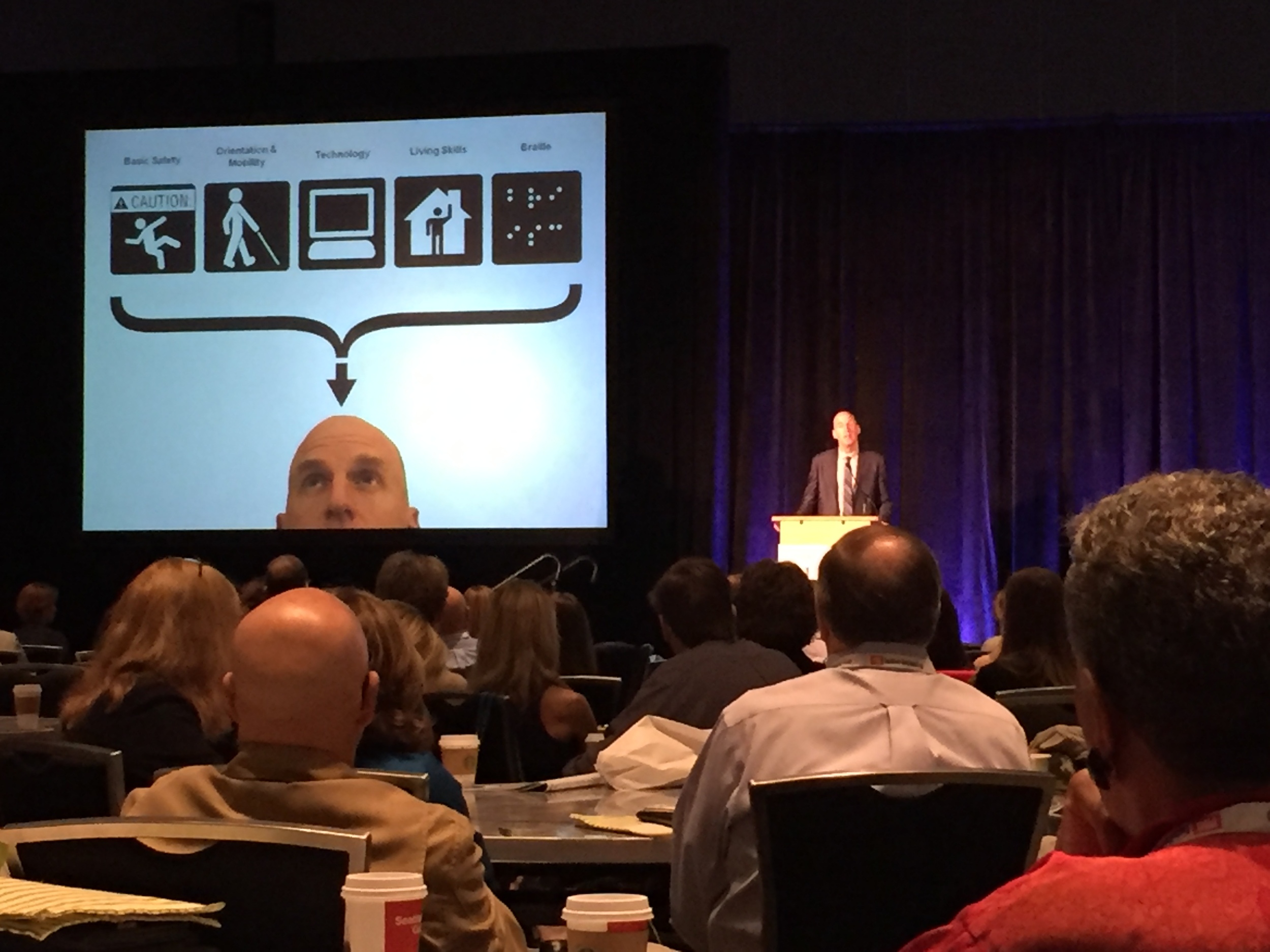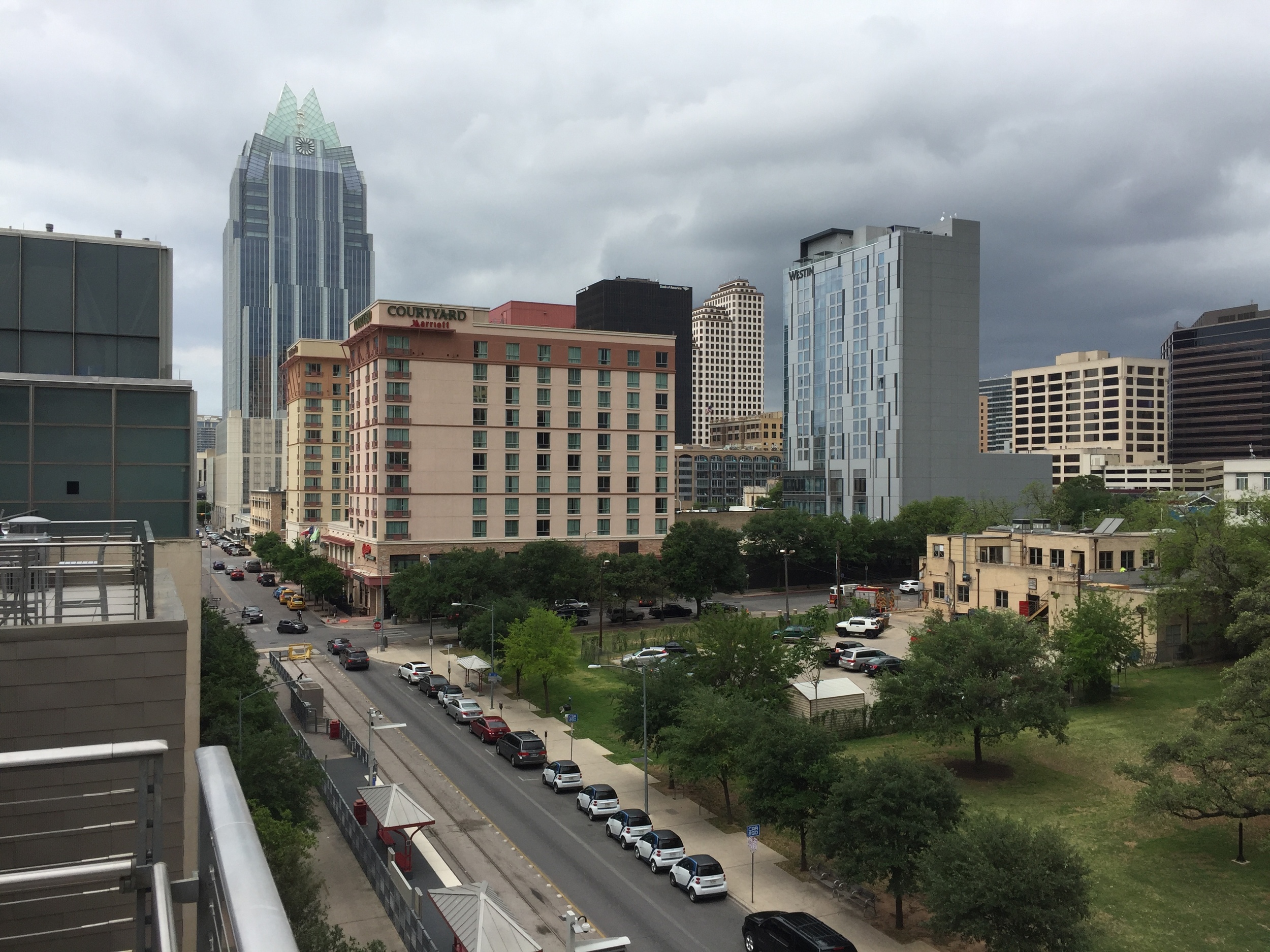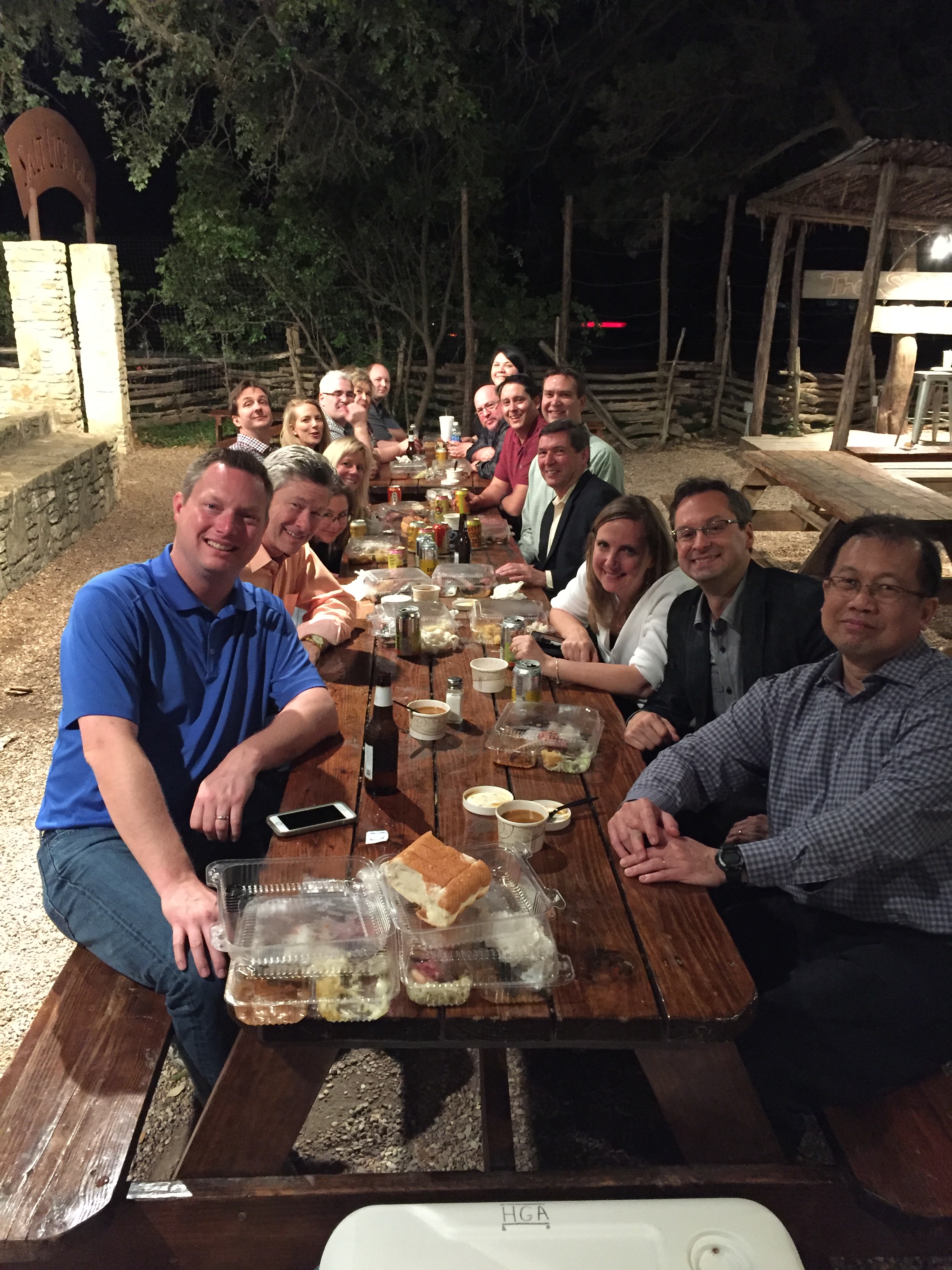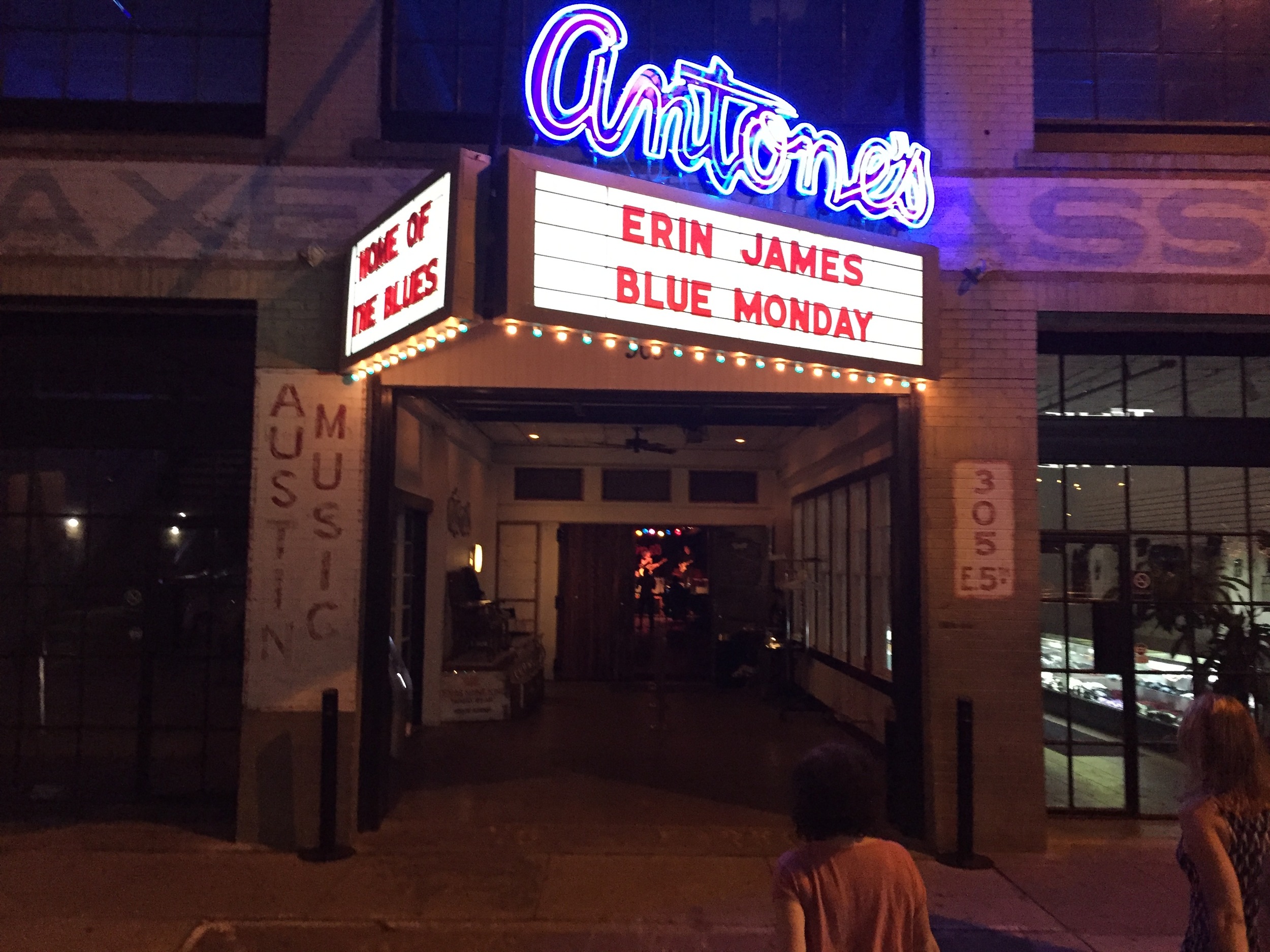Environments For Aging Conference
April 9-12, 2016: Austin, Texas
With over 50 sessions to choose from, there was a lot going on in Austin, besides the BBQ and live music. Tom Dillenbeck, AIA and Betsy Wagner, IIDA were both representing the Senior Living studio from Hobbs+Black. Here are just a few take-aways from what they learned.
Plan for Movement, not for Objects – Too often designers and planners are focused on providing an efficient floor plan and design around the pieces of furniture that inhabit a space – such as beds, wardrobes and sinks. However, in Assisted Living the goal is for people to be up moving about, not lying in a bed all day. With the mobility aids required by the aging population, adequate consideration should be given for maneuvering through a space.
Non-Visual Building Elements – The opening keynote speaker, Chris Downey, said that to the visually-impaired “the hardware on the front door is the handshake of the building.” A falling-apart door knob would give one a taste of the type of treatment that may be experienced inside. As designers, we ought to consider the points of touch throughout the building as well as the audible experience. Appropriate acoustical materials should be considered in lobbies and areas where voice recognition may be difficult due to reverberation from hard surfaces.
Creative Courtyards – Many Senior Living projects have a courtyard of some type, but are we making the most of them? Depending on the type of residents, courtyards can be designed to provide for many different needs. Some residents need the therapeutic nature of an active planting garden, while others are looking for solitude in a healing garden. Providing a variety of spaces, shade, seating and good connection between indoor/outdoor help promote greater use of courtyards for a variety of activities. A well designed space helps improve a resident’s mobility, motor functions and pleasure.
Lighting Effects – The typical human eye receives 1/3 of the amount of light by the age of 60. Most of the senior residents are living with some form of low vision impairment. Designers can do several things to help overcome low-vision issues:
Light the walls, hide the source – providing vertical illumination to help navigation
Provide contrast in baseboards, handrails and edges of courtyard walking paths
Select materials which will reduce glare, both inside and out
Provide lighting controls that work with the natural circadian biological clock







